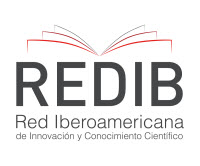Percepción de turistas nacionales y foráneos del servicio en restaurantes de Todos Santos Pueblo Mágico, México
Palabras clave:
Calidad, Percepción, Restaurantes, Servicio, Satisfacción.Resumen
El pueblo mágico de Todos Santos es un sitio estratégico para el desarrollo local y dependiente de la economía turística incentivada por visitantes nacionales y foráneos. Los restaurantes del pueblo obtienen la materia prima de la región para prestar servicios en diferentes especialidades de comida. La calidad del servicio (SQ) y la satisfacción del cliente (CS) son dos constructos que al evaluarse permiten potenciar las estrategias de cualquier mercado. En este estudio, se evalúa la percepción y la relación de la SQ y la CS en las diferentes especialidades de restaurantes contrastando la percepción entre los turistas nacionales y foráneos. Mediante 162 encuestas se valoraron los constructos utilizando cinco dimensiones: instalaciones, accesibilidad, capital humano, atmósfera y alimentos, donde hipotéticamente la de alimentos y capital humano deberían ser los principales determinantes. Los resultados sugieren que la SQ y la CS se perciben de manera similar entre ambos segmentos, excepto en la especialidad Italiana en todas sus dimensiones y parcialmente la Japonesa. La dimensión de comida fue la mayor valorada, sin embargo, no fue significativamente diferente del resto de las dimensiones. La SQ tuvo un impacto en la CS dada la percepción de los comensales por segmento de acuerdo a un análisis de correlación, cuyo efecto causal deber ser profundizado.Citas
Aeker, D., & Jacobson, R. (1994). The financial information content of perceived quality. Journal of Marketing Research, 31(2), 191-201.https://www.jstor.org/stable/3152193
Akbaba, A. (2006). Measuring service quality in the hotel industry: A study in a business hotel in Turkey. International Journal of Hospitality Management, 25(2), 170-192. https://doi.org/10.1016/j.ijhm.2005.08.006
Anderson, D. R., Sweeney, D. J., Williams, T. A., Camm, J. F., & Cochran, J. J. (2018). Statistics for business & economics. USA Cengage Learning.
Armstrong, K. (2012). Principles of Marketing (14th edition). New Jersey: USA Pearson Education Inc.
Aurier, P., Evrard, Y., & N´Goala, G. (2004). Comprendre et mesurer la valeur du point de vue du consommateur. Recherche et Applications en Marketing, 19(3), 1-20. Obtenido de https://doi.org/10.1177/076737010401900301
Bonnet, D. G. (2002). Sample size requirements for testing and estimating coefficient alpha. Journal of Education and Behavioral Statistics, 27(335), 335-340. https://doi.org/10.3102/10769986027004335
Buttle, F. (1996). "SERVQUAL: review, critique, research agenda", European Journal of Marketing, Vol. 30 No. 1, pp. 8-32. https://doi.org/10.1108/03090569610105762
Celina, H., & Campo, A. (2005). Aproximación al uso del coeficiente alfa de cronbach. Revista Colombiana de Psiquiatría, 34(4), 572-580.
Cronin, J., & Taylor, S. A. (1994). SERVPERF vs SERVQUAL: Reconciling performance-based and perceptions-minus expectations measurement of service quality. Journal of Marketing, 58(1), 125-131.
Dagger, T. S. & Sweeney, J. C. (2007). Service quality attribute weights: how do novice and longer-term customer construct service quality perceptions? Journal of Service Reseach, 10, 22-42. https://doi.org/10.1177/1094670507303010
Evrard, Y., & Aurier, P. (1996). Identification and validation of the components of the person-object relationship. Journal of Business Research, 37(2), 127-134. https://doi.org/10.1016/0148-2963(96)00054-9
Fujun, L., Hutchinson, J., Li, D., & Changhong, B. (2007). An empirical assessment and application on SERVQUAL in mainland china´s mobile communications industry. The International Journal of Quality & Reliability Management, 24(3), 244-262. https://doi.org/10.1108/02656710710730852
Gardial, F. S., Clemons, S. D., Woodruff, B., Schumann, W. D., & Burns, J. (1994). Comparing consumer's recall of pre-purchase and post-purchase product evaluation experience. Journal of Consumer Research, 20, 548-560. https://www.jstor.org/stable/2489758
Gilbert, G. R., & Veloutsou, C. (2006). A cross-industry comparison of customer satisfaction. The Journal of Service Marketing, 20(5), 298-308. https://doi.org/10.1108/08876040610679918
Gilbert, G. R., Veloutsou, C., Goode, M., & Moutinho, L. (2004). Measuring customer satisfaction in the fast food industry: a cross national approach. Journal of Service Marketing, 18(5), 371-383. https://doi.org/10.1108/08876040410548294
Guzmán-López, A., & Cárcamo-Solís, M. L. (2014). La evaluación de la calidad en el servicio: caso de estudio "Restaurant Familiar Los Fresnos". Acta Universitaria, 24(3), 35-49.
Halstead, D., Hartman, D., & Schmidt, S. L. (1994). Multisource effects on the satisfaction formation process. Journal of the Academy of Marketing Science, 22(2), 114-129. https://doi.org/10.1177/0092070394222002
Hernándes-de-Velazco, J., Chumaceiro, A., & Atencio, E. (2009). Calidad de servicio y recurso humano: caso de estudio tienda por departamentos. Revista Venezolana de Gerencia (RVG), 14(47), 457-470.
Hernández-Sampieri, R., Fernández-Collado, C., & Baptista, L. (2014). Metodología de la Investigación. México: McGraw Hill Education.
Kim, O., Seo, S., & Nurhidayati, V. (2019). Scale to measure tourist value of destination restaurant service. International Journal of Contemporary Hospitality Management, 31(7), 2827-2844. https://doi.org/10.1108/IJCHM-05-2018-0443
Kotler, P., & Armstrong, G. (2012). Principles of Marketing. Pearson.
Ladhari, R. (2008). Alternatives measures of service quality: a review. Managing Service Quality, 18(1), 65-86. https://doi.org/10.1108/09604520810842849
Ladhari, R. (2009). A review of twenty years of SERVQUAL research. International Journal of Quality and Service Sciences, 1(2), 172-198. https://doi.org/10.1108/17566690910971445
Mano, H., & Oliver, R. (1993). Assessing the dimensionality and structure of the consumption experience: Evaluating, feeling, and satisfaction. Journal of Consumer Research, 20, 451-466. https://doi.org/10.1086/209361
Moliner-Cantos, C. (2001). Calidad de servicio y satisfacción del cliente. Revista de Psicología del Trabajo y de las Organizaciones, 17(2), 233-235.
Monroy-Ceseña, M. A, & Urcádiz-Cázares, F. J. (2019). Calidad en el servicio y su incidencia en la satisfacción del comensal en restaurantes de La Paz, México. Investigación Administrativa, 48, 123 https://doi.org/10.35426/IAv48n123.06
Muhamad, O., Hashim, A., & Rozila, A. (2016). Service Quality, Customers’ Satisfaction and the Moderating Effects of Gender: A Study of Arabic Restaurants. Procedia - Social and Behavioral Sciences, 224, 384-392. https://doi.org/10.1016/j.sbspro.2016.05.393
Namin, A. (2017). Revisiting customer's perception of service quality in fast-food restaurants. Journal of Retailing and Consumer Services, 34, 70-81. https://doi.org/10.1016/j.jretconser.2016.09.008
Namkung, Y., Cheong S. J. & Choi, S. K. (2011). Customer complaints in restaurants: Do they differ by service stages and loyalty levels? International Journal of Hospitality Management, 30(3):495-502. https://doi.org/10.1016/j.ijhm.2010.07.005
Nguyen, Q., Nisar, T., Knox, D., & Prabhakar, G. (2019). Understanding customer satisfaction in the UK quick service restaurant industry: The influence of the tangible attributes of perceived service quality, British Food Journal, 120(6), 1207-1222. https://doi.org/10.1108/BFJ-08-2017-0449
Oliver, R. L., Rust, R. T., & Varki, S. (1997). Customer Delight: foundations, findings and managerial insight. Journal of Retailing, 73(3), 311-336. https://doi.org/10.1016/s0022-4359(97)90021-X
Rodríguez-Herrera, I. M., Pulido-Fernández, J. I., Vargas-Vázquez, A., & Shaadi-Rodríguez, R. M. A. (2018). Dinámica relacional en los pueblos mágicos de México. Estudio de las implicaciones de la política turística a partir del análisis de redes. Turismo y Sociedad, (22), 85-104. https://doi.org/10.18601/01207555.n22.05
Ryu, K., & Han, H. (2011). New or repeat customers: how does physical environment influence their restaurant experience? International Journal of Hospitality Management, 30(3), 599-611. https://doi.org/10.1016/j.ijhm.2010.11.004
Ryu, K., Lee, H., & Gon-Kim, W. (2012). The influence of the quality of the physical environment, food, and service on restaurant image, customer perceived value, customer satisfaction, and behavioral intentions. International Journal of Contemporary Hospitality Management, 24(2), 200-223. https://doi.org/10.1108/09596111211206141
Sartor, M. (2019). Customer Satisfaction Analyses, In: Sartor, M. and Orzes, G. (Ed.) Quality Management: Tools, Methods, and Standards, Emerald Publishing Limited, pp. 109-116. https://doi.org/10.1108/978-1-78769-801-720191007
Spreng, R. A., & Olshavsky, R. W. (1993). A desires congruency model of costumer satisfaction. Journal of the Academy of Marketing, 21(3), 169-177. http://dx.doi.org/10.1177/0092070393213001
Spreng, R. A., MacKenzie, S. B., & Olshavsky, R. W. (1996). A reexamination of the determinants of customer satisfaction. Journal of Marketing, 60, 15-32. http://dx.doi.org/10.2307/1251839
Sureshchandar, G. S., Rajendran, C., & Anatharaman, R. N. (2002). The relationship between service quality and customer satisfaction - a factor specific approach. Journal of Services Marketing, 16(4), 363-379. https://doi.org/10.1108/08876040210433248
Tristan, A. (2008). Modificación al modelo de Lawshe para el dictamen cuantitativo de la validez de contenido de un instrumento objetivo. Avances en Medición, 6, 37 - 48.
Vanhamme, J. (2002). La satisfaction des consommateurs spécifique à une transaction: définition, antécédents, mesures et modes. Recherche et Applications en Marketing, 17(2), 55-85. https://www.jstor.org/stable/40589322
Vera, J., & Trujillo, A. (2017). Escala Mexicana de Calidad en el Servicio (EMCASER). Innovar, 27(63), 43 - 59. https://doi.org/10.15446/innovar.v26n63.60665
Voon, B. H. (2012). Role of service environment for restaurants: the youth customer’s perspective. Procedia-Social and Behavioral Sciences (38), 388-395. https://doi.org/10.1016/j.sbspro.2012.03.361
Westbrook, R. (1987). Product/Consumption-based affective responses and postpurchase processes. Journal of Marketing Research, 24, 258-270.
Wilkins, H., Merrilees, B., & Herington, C. (2007). Towards an understanding of total service quality in hotels. International Journal of Hospitality Management, 26(4), 840-853. https://doi.org/10.1016/j.ijhm.2006.07.006
Yi, Y. (1991). A Critical Review of Consumer Satisfaction. In V. A. Zeithaml (Ed.), Review of Marketing 1990 (pp. 68-123). Chicago, IL: American Marketing Association.
Zairi, M. (2000). Managing Customer Dissatisfaction Though Effective Complaint Management Systems. The TQM Magazine, 12(5), 331-337. https://doi.org/10.1108/09544780010341932
Zárraga, L., Molina, V., & Corona, E. (2018). La satisfacción del cliente basada en la calidad en el servicio a través de la eficiencia del personal y eficiencia del servicio: un estudio empírico de la industria restaurantera. Revista de Estudios en Contaduría, Administración e Informática, 7(18), 46-65.
Publicado
Cómo citar
Número
Sección
Licencia
Derechos de autor 2020 Mauro Alejandro Monroy Ceseña, Francisco Javier Urcádiz CázaresAtribución-NoComercial 2.5 Argentina (CC BY-NC 2.5 AR)
Usted es libre de:
- Compartir - copiar y redistribuir el material en cualquier medio o formato
- Adaptar - remezclar, transformar y construir a partir del material
La licenciante no puede revocar estas libertades en tanto usted siga los términos de la licencia
Bajo los siguientes términos:
- Atribución - Usted debe dar crédito de manera adecuada, brindar un enlace a la licencia, e indicar si se han realizado cambios. Puede hacerlo en cualquier forma razonable, pero no de forma tal que sugiera que usted o su uso tienen el apoyo de la licenciante.
- NoComercial - Usted no puede hacer uso del material con propósitos comerciales.
- No hay restricciones adicionales - No puede aplicar términos legales ni medidas tecnológicas que restrinjan legalmente a otras a hacer cualquier uso permitido por la licencia.
Avisos:
No tiene que cumplir con la licencia para elementos del material en el dominio público o cuando su uso esté permitido por una excepción o limitación aplicable.
No se dan garantías. La licencia podría no darle todos los permisos que necesita para el uso que tenga previsto. Por ejemplo, otros derechos como publicidad, privacidad, o derechos morales pueden limitar la forma en que utilice el material.




















